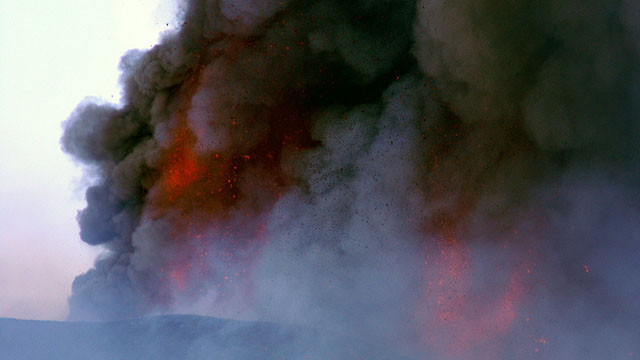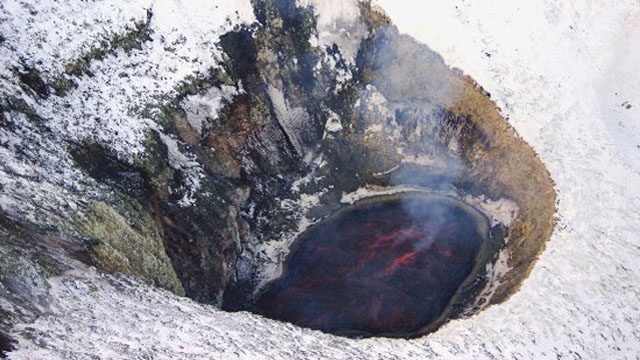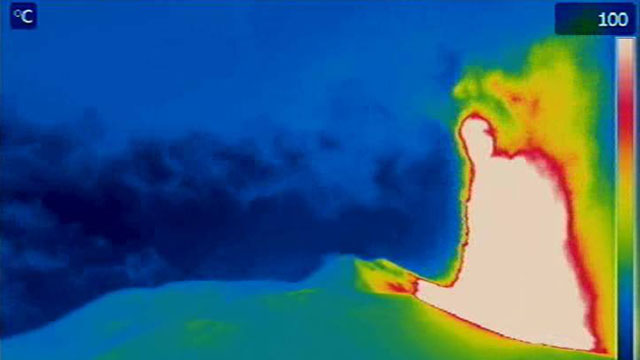Grímsvötn ash cloud causes flight disruptions (but Ryanair president says it doesn’t exist)

The ash from the Grímsvötn eruption in Iceland has now made its way to the British Isles and over 200 flights have been delayed or cancelled due to the ash, mostly of which are in British airspace, although some flights to Scandinavian countries (and Greenland) have been effected as well. This number could climb to over 500 if the ash persists. However, the eruption appears to be waning (see below for more details), which might suggest any flight disruptions will be brief. The London VAAC models predict that ash will also start to reach the northernmost part of continental Europe soon as well, so some flights into northern Germany, the Low Countries and France might be problematic. However, I was a little stunned this morning to see that Ryanair president Michael O’Leary thinks there is no ash hazard whatsoeverover Britain and Scotland. He claims that his company flew a verification flight in the UK Meteorological Office “Red Zone” for ash and was told it was perfectly safe. However, the UK claims that the flight that O’Leary refers to did not enter the ash “Red Zone”. So, it looks like the airlines, or at least Ryaniar, is going on the offensive against any curtailment of flights due to the Grímsvötn ash. I hate to say it, but I think the only thing that will convince O’Leary that ash is a real danger to aircraft is when one of his airliners has a serious incident – so it is money over safety at Ryanair. Dr. Clive Oppenheimer does a good job of summarizes why it is so difficult to truly predict the ash location and density, meaning that we need to be very careful when attempting to fly near ash plumes.
UPDATE 11:30 AM (Eastern): If you still have questions about the Grímsvötn ash and its ramification for your (or anyone’s) travel, check out what Volcan01010 has to say in his latest Q&A.

It appears that the plume from Grímsvötn is slowly getting smaller, likely due to both less eruptable magma to eject and less ready access to water to help drive the explosive eruption. The estimate magma discharge rate this morning is ~1,000 tons/second (possibly as low as hundreds of tons/second – Icelandic), down from over 10,000 tons/second over the weekend, according to the IMO. There have also been fewer earthquake and much less lightning observed in the plume. Interestingly, Dr. Magnus Tumi Gudmundsson mentioned that there has been no sighting of any lava flows related to this eruption and that they now expect that the eruption might be entirely ash. In Iceland, the ash is easing up as well. there are rescue efforts underway for farmers that live near the eruption zone – these areas have seen heavy ash fall, limiting food and water access to these farmers. The ash from the eruption might also be hastening the melting of glaciers (Icelandic) in Iceland as the ash will absorb more sunlight in the coming summer months.

Ash fall in Iceland on May 23, 2011. See original here.
If you’re looking for more pictures of the Grímsvötn eruption, there are tons out there. The newly-revamped NASA Earth Observatory posted an image of the eruption as it started on May 22. The Washington Post has a great compilation of tweets, time-lapse video and images of the eruption, while Monsters and Critics and the Atlantic both have image galleries of the Grimvotn eruption. If you missed them yesterday, be sure to check out the animated GIF of the early stages of the eruption that show a textbook example of how a Plinian column develops, spreading out as it hits the stratosphere (just at Pliny the Younger saw in 79 A.D. at Vesuvius). Also, check out the weather satellite images of the eruption plume punching through the atmosphere.
If you happen to be somewhere where the ash is falling, you could try to collect some for scientific purpose – check out Volcan01010 for instructions on how to collect the ash.
Check out all the posts on the Grímsvötn eruption to find all the details:
Top left: The ash and plume from Grímsvötn, seen on May 23, 2011.





